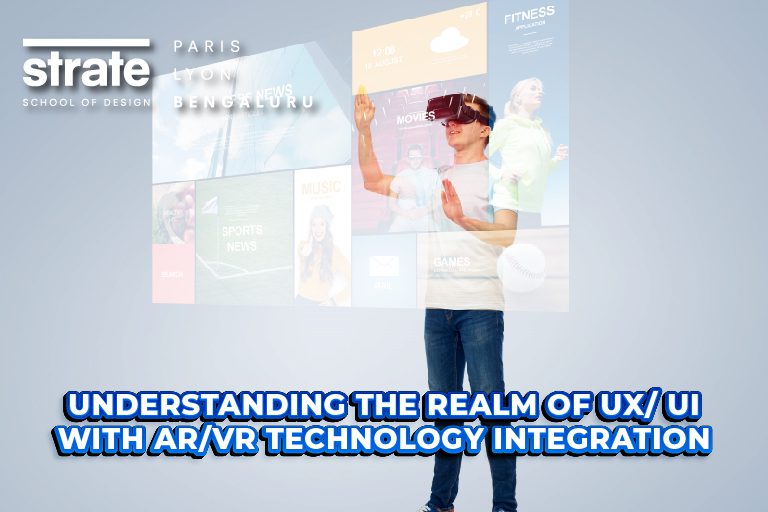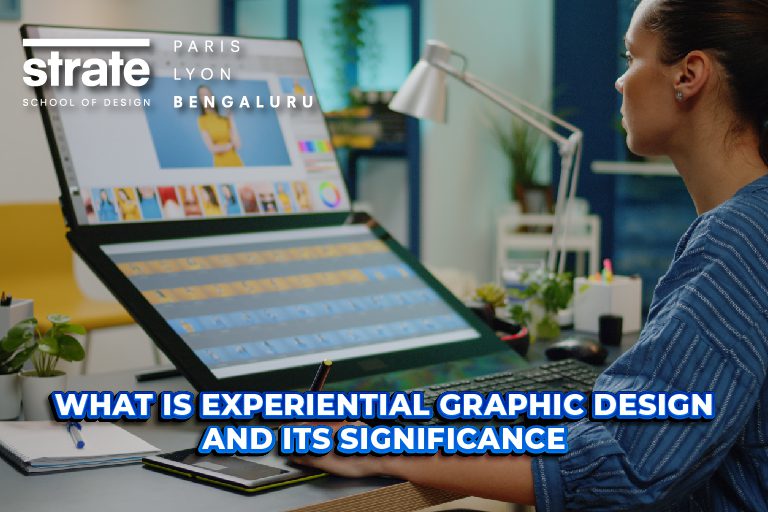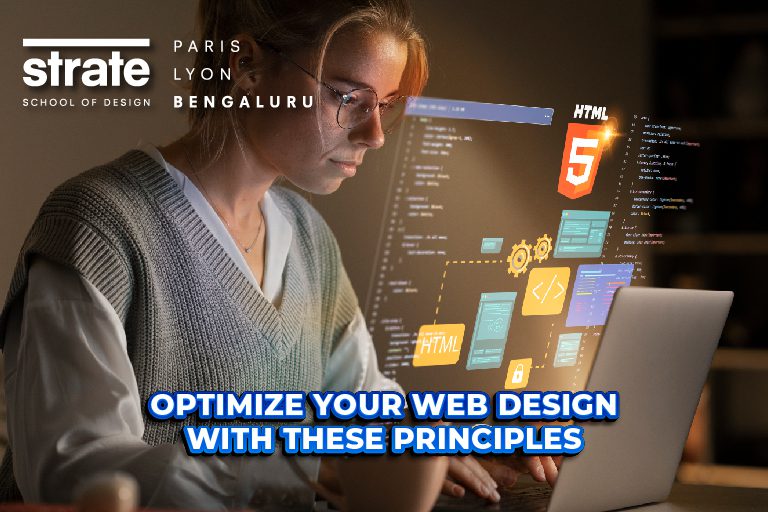The design sector’s relentless pursuit to improve user experiences (UX) and design more intuitive user interfaces (UI) is shaping new digital experiences with the use of technology. UX / UI designers are the forefront of changing dynamics in the design and technology amalgamation space. They are the architects, the narrators and storyteller of a user’s digital journey, working with multiple tools to bring creative vision to life. They work on designing every single interaction, layout, and element that users experience online. Each carefully crafted, backed with research to guide user to seamlessly navigate through a website or application.
The UX/UI design tools are critical players in designing smooth and user-centric digital experiences. They often help designer to simplify the process, enhance collaborative teamwork and transform ideas into visually captivating designs. However, with rising use of technology tools, the UX/UI design tools are also evolving. From simply static graphic design tools to advanced prototyping, they now come equipped with AI, ML, Generative AI, and AR/VR/ER modalities. Equipping designer with technology based fast-learning tools to design for 3D and metaverse domains.
What is VR/AR in UX/UI design?
It’s the design of immersive and seamlessly smooth interactions for users. VR and AR work with digital data to create real time user interactions, creating higher level of engagement.
Virtual Reality (VR) means an immersive environment where users can explore, interact, and engage via VR headset. Augmented Reality (AR) is digitally overlaying digital content on user’s real world surrounding, via an AR headset or using a smartphone. For instance, the filter used by Snapchat are AR technology generated.
In UX/UI design, AR/VR technology bring designer a 3D space. Where designers must work with depth perception, spatial awareness, and gesture-based controls.
New trends in UX/UI design using AR/VR tools
Let’s understand the prominent trends emerging in UX/UI with AR/VR integration:
1. Immersive experiences
AR/VR are enabling designer to generate immersive experience for users. Think of Metaverse concerts that have been taking over globally. Travis Scott’s virtual concert in Fortnite, a popular video game attracted 12 million live viewers and showcased stunning visuals, interactive and engaging elements on larger-than life virtual stage.
These technologies are offering designer tools to meticulously design user interfaces that are user-centric and captivating. Utilizing the dynamic features of VR/AR exploring 3D space and movement.
2. Intuitive Interactions
One of the key elements in VR/AR is gesture-based controls. UI/UX designers works carefully to input motion-based controls where emphasizing instinctive interactions of humans is key. They simplify user navigation and interaction with the digital space. Such as
i. gaze-oriented selection – where users can choose items by merely eyeing over them.
ii. gesture identification- where users interact with content via hand motions
iii. vocal instruction – allowing users to manage their experiences with simple everyday language usage.
Gaming sector is an ideal example of how AR/VR tools are used to build intuitive UX/UI interactions.
3. Spatial UI
A key part of 3D based UX/UI design for designers is considering the spatial context of the user’s environment and digital content created. 3D designs are real-time designs where UI elements are placed considering factors like depth, scale, perspective and more. Consider AR realm, since the digital content is overlaid with the user’s real-world surroundings, designers must consider how the digital and physical world interact. Offering a seamless UI to the users.
4. Accessibility and Inclusivity
Like all other design domains, UX/UI in AR/VR world is prioritizing diversity, inclusivity, and accessibility. Designers are researching in depth to generate data for users with different needs, to ensure that experiences are usable, interactive, and enjoyable for everyone. In AR/VR design, this means UX/UI designers work to:
i. understands users limited mobility.
ii. ensure that text, visual elements, and colours used are visible and easy to comprehend.
iii. design for various levels of technology proficiency.
Global Brands Providing AR/VR Tools for Smooth 2D to 3D UX/UI Transition
1. Unity VR Engine
Unity is a global name in the gaming design and overall design sector. The brand offers one of the leading and well-known tools for VR/AR design. They have the most comprehensive, easy-to-use, versatile, and most widely accept toolkit in the design domain. The brand offers:
a. Platform support – for SteamVR, Meta Quest, PlayStattion VR and others. Comes with optimized graphics, profiling tools, and XR Interaction toolkit.
b. Creative graphics – to build immersive VR games that can run across different hardware requirements.
c. Performance that scales – this means accessible for beginners and highly immersive for pros. Its real-time development platform helps designers offering them VR templates and reduce coding.
2. Adobe Aero
This is an all-in-one AR platform that is powered with intuitive tools to build, view, and share robust storytelling experiences for mobile AR. It is an apt tool for designers starting to transition their UX/UI journey in the 3D landscape. It’s a user-friendly tool, highly versatile and seamlessly works with Photoshop and Illustrator for 2D designs. While also compatible with Adobe Substance 3D Stager and Cinema 4D. Adobe markets Aero as designers’ space to ‘Create spatially aware interactive experiences for your favourite spaces and places. No coding needed — but imagination required.’ It’s key features include:
a. Customization – Aero brings the power of AR at designers’ fingertips. Combining 3D, 2D and audio assets for a true multimedia experience.
b. Mobile AR revolution – The Aero system is designed and connected with the Creative Cloud offering designers and users to author, interact and experience AR on mobile devices. Anyone can view AR projects on Aero without downloading the application. Distributing work became easy, share the QR code and launch AR on smart devices.
c. Beginner friendly – Aero is usable for seasoned designers as well as new beginners. Its intuitive and simple to use plus share. Designers can create diverse UX/UI experiences like virtual exhibits to posters coming alive.
3. Gravity Sketch
Considered to be the premium VR design software for Oculus Headsets, Gravity Sketch is a virtual studio for designer to create, communicate and share in 3D. Every step of their workflow can be shared in 3D. It has:
a. Intuitive tools – Gravity Sketch offers intuitive gestural design tools to capture a designer’s ideas in 3D too.
b. Time saving – It offers UI/UX designers tools to design ideas into high fidelity 3D design in hours. Saving days, offering time for iteration, feedback, and collaboration on the same design programme. It has co-creation tools and real-time iteration in collaboration room in VR.
c. Diverse Tools – such as sketches to intricate 3D modelling.
Gravity Sketch is the only global brand offering a free version for UX/UI designers to explore VR design on its platform.
The growth and development of AR/VR technologies offers exciting prospects for UX/UI designers. We can expect to see more innovative and revolutionary applications in UX/UI design. We are already witnessing the rise of mixed reality experiences that are bringing captivating new experience to the table. It’s essential for UX/UI designer to keep up with the latest advancement in AR/VR to remain at the forefront of user-centric experiences. Generating interactive and progressively engaging possibilities that will enhance experience across retail, online shopping, education, remote surgery, training and more.
Want to learn more about leading technology trends in design?
Stay tuned to the Strate India blog for latest updates or join one of the leading Strate School of Design programmes in:
– Brand Identity and Visual Communication Design
– Transportation Design
– Product Design
– Interaction Design





Want to Become a Designer ?
Strate is a unique design school that nurtures your talents as a designer by offering state-of-the art designing courses in Bangalore.
Join Strate